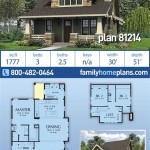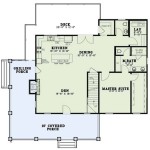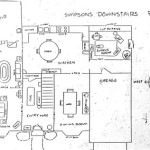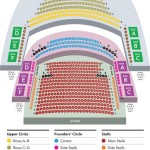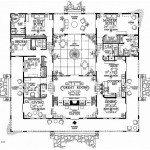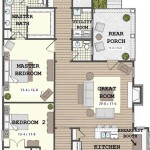Portable Building Home Plans: A Comprehensive Guide
Portable buildings, once primarily associated with temporary construction sites and storage solutions, have evolved significantly and are now a viable option for permanent housing. Portable building home plans offer a unique opportunity to create cost-effective, customizable, and often eco-friendly living spaces. Understanding the intricacies of these plans, the regulations involved, and the potential benefits is crucial for anyone considering this alternative housing option.
The term "portable building" can encompass a wide variety of structures, from prefabricated modular homes to repurposed shipping containers and tiny houses on wheels. The common thread is that these buildings are typically constructed off-site and then transported to their final location. This method of construction offers several advantages, including reduced construction time, controlled environments that minimize weather-related delays, and potentially lower labor costs.
However, navigating the world of portable building home plans requires careful consideration of various factors, including local zoning regulations, building codes, foundation requirements, utility connections, and transportation logistics. This article aims to provide a comprehensive overview of portable building home plans, covering key considerations and offering insights into the planning and execution of such projects.
Understanding Different Types of Portable Buildings for Homes
The first step in exploring portable building home plans is to understand the different types of structures available. Each type has its own unique characteristics, advantages, and disadvantages, which will influence the overall design and feasibility of the project.
Modular Homes: Modular homes are constructed in sections, or modules, in a factory setting. These modules are then transported to the building site and assembled on a permanent foundation. Modular homes are typically built to meet the same building codes and standards as site-built homes, making them a readily accepted housing option in many areas. They offer a high degree of customization and can be designed to match a wide range of architectural styles.
Prefabricated Homes (Prefab Homes): This category is broad and can include modular homes. However, prefab homes often refer to panelized homes, where walls, floors, and roof sections are pre-cut and assembled in a factory. These panels are then transported to the site and assembled on-site. Prefab homes can also offer significant customization options, although the level of prefabrication can vary.
Shipping Container Homes: Shipping containers, typically used for international cargo transport, have gained popularity as a sustainable and affordable building material. Their inherent structural strength and standardized dimensions make them suitable for creating unique and modern homes. However, converting shipping containers into habitable spaces requires significant modifications, including insulation, cutting openings for windows and doors, and addressing potential issues such as rust and chemical residues. Shipping container homes require careful planning and adherence to local building codes.
Tiny Houses on Wheels (THOWs): Tiny houses on wheels are typically built on trailers and are designed to be mobile. These structures offer a compact and minimalist living option. However, THOWs often face regulatory challenges, as they may not be classified as traditional dwellings. Local zoning laws may restrict where THOWs can be legally parked or used as permanent residences. It's crucial to understand the regulations regarding THOWs in the intended location.
Key Considerations for Portable Building Home Plans
Developing a successful portable building home plan requires careful attention to several key considerations. Failing to address these factors can lead to costly delays, regulatory issues, and ultimately, an unsatisfactory outcome.
Local Zoning Regulations and Building Codes: This is arguably the most critical aspect of planning a portable building home. Zoning regulations dictate what types of structures are permitted in specific areas, while building codes set the minimum standards for safety and construction quality. Different municipalities may have varying regulations regarding portable buildings, and it's essential to thoroughly research these requirements before proceeding with any design or construction. Factors like setbacks, height restrictions, and minimum square footage requirements can significantly impact the feasibility of a portable building project. Building codes will dictate the materials, construction methods, and safety features that must be incorporated into the design.
Foundation Requirements: Portable buildings, even THOWs to a degree, typically require a foundation, even if it's a minimal one. The type of foundation will depend on the type of building, the soil conditions, and local building codes. Modular homes and prefab homes usually require permanent foundations similar to those used for site-built homes, such as concrete slabs or crawl spaces. Shipping container homes may require concrete piers or a full foundation, depending on the design and the number of containers used. THOWs, while mobile, may still require a foundation if they are to be used as permanent residences, or at least require proper leveling and stabilization.
Utility Connections: Connecting a portable building to essential utilities such as water, electricity, and sewer is a critical step. This process requires careful planning and coordination with local utility providers. The location of existing utility lines and the capacity of the existing infrastructure will influence the cost and complexity of the connections. In some cases, it may be necessary to install new utility lines or upgrade existing ones. Septic systems or alternative wastewater treatment solutions may also be required, particularly in rural areas. For off-grid applications, alternative energy sources like solar panels and rainwater harvesting systems may be considered.
Transportation Logistics: Transporting a portable building from the factory or construction site to its final location requires careful planning and coordination. The size and weight of the building will determine the type of equipment needed for transportation, such as flatbed trucks and cranes. Permits may be required for transporting oversized loads, and the route must be carefully planned to avoid obstacles such as low bridges and narrow roads. The accessibility of the building site is also a crucial factor. Narrow roads, steep slopes, or limited space for maneuvering can significantly increase the cost and complexity of the transportation process. Proper insurance coverage is essential to protect against potential damage during transportation.
Design and Customization Options: Portable buildings offer a wide range of design and customization options. Modular and prefabricated homes can be designed to match almost any architectural style, from traditional to contemporary. Interior layouts can be customized to meet the specific needs of the homeowner. Shipping container homes offer a unique opportunity to create unconventional and modern living spaces. The number of containers used, their arrangement, and the integration of other materials can result in a wide variety of design possibilities. Tiny houses on wheels, while limited in size, can be designed with clever space-saving solutions and innovative features. Careful planning and attention to detail can maximize the functionality and comfort of a tiny house.
Cost Considerations for Portable Building Homes
One of the primary motivations for choosing a portable building home is often cost savings. However, it's crucial to understand all the associated costs to properly evaluate the affordability of this option. While the initial cost of a portable building may be lower than that of a site-built home, there are other expenses to consider.
Building Cost: This is the primary cost and includes the price of the portable building itself. Prices will vary depending on the type of building, the size, the level of customization, and the materials used. Obtaining multiple quotes from different manufacturers or builders is essential to compare prices and ensure that you are getting the best value for your money.
Site Preparation Costs: Preparing the building site can involve a range of expenses, including clearing the land, grading, excavation, and foundation construction. The cost of site preparation will depend on the condition of the land and the type of foundation required. Soil testing may be necessary to determine the stability of the ground and the appropriate foundation design. In some cases, it may be necessary to remove trees, rocks, or other obstacles from the site.
Transportation Costs: As mentioned earlier, transporting a portable building can be a significant expense. The cost will depend on the distance from the factory to the building site, the size and weight of the building, and the type of equipment required for transportation. Obtaining quotes from reputable transportation companies is essential to ensure that the building is transported safely and efficiently.
Utility Connection Costs: Connecting the portable building to utilities can also be a substantial expense. The cost will depend on the location of existing utility lines and the extent of the work required to connect to them. In some cases, it may be necessary to pay connection fees to the utility providers.
Permitting and Inspection Fees: Obtaining the necessary permits and inspections is a crucial step in the process. Permit fees can vary depending on the location and the type of building. Inspection fees are typically charged for each inspection performed by the local building department. It's essential to factor these costs into the overall budget.
Financing Options: Securing financing for a portable building home can sometimes be more challenging than obtaining a mortgage for a site-built home. Some lenders may be hesitant to finance portable buildings due to concerns about resale value or regulatory issues. However, there are lenders who specialize in financing alternative housing options. Exploring different financing options and comparing interest rates and terms is essential to finding the best loan for your needs.
In conclusion, portable building home plans represent a compelling alternative to traditional housing, offering potential cost savings, customization options, and faster construction times. However, careful planning, thorough research, and adherence to local regulations are crucial for the success of any portable building project. Understanding the different types of portable buildings, the key considerations involved, and the associated costs will enable individuals to make informed decisions and create a comfortable, sustainable, and affordable living space.

Tiny House Floor Plan Cabin Plans Shotgun

Shedsplans Info Tiny House Floor Plans Cabin Lofted Barn

Recreational Cabins Cabin Floor Plans

Image Result For 12 By 32 Portable Building Tiny House Floor Cabin Plans Small

Transpa Tiny House Clipart Portable Building 12x32 Cabin Floor Plans Hd Png Is Free Shed To

Recreational Cabins Cabin Floor Plans

Premier Lofted Barn Cabin Buildings By

Modular Home Floorplans Layouts Next

The Austin 2 Br Ez Portable Buildings Tiny Houses Storage Building Plans Built In

Derksen Building Floor Plans A Guide To Choosing The Perfect Portable Shed Tiny House Loft Buildings

